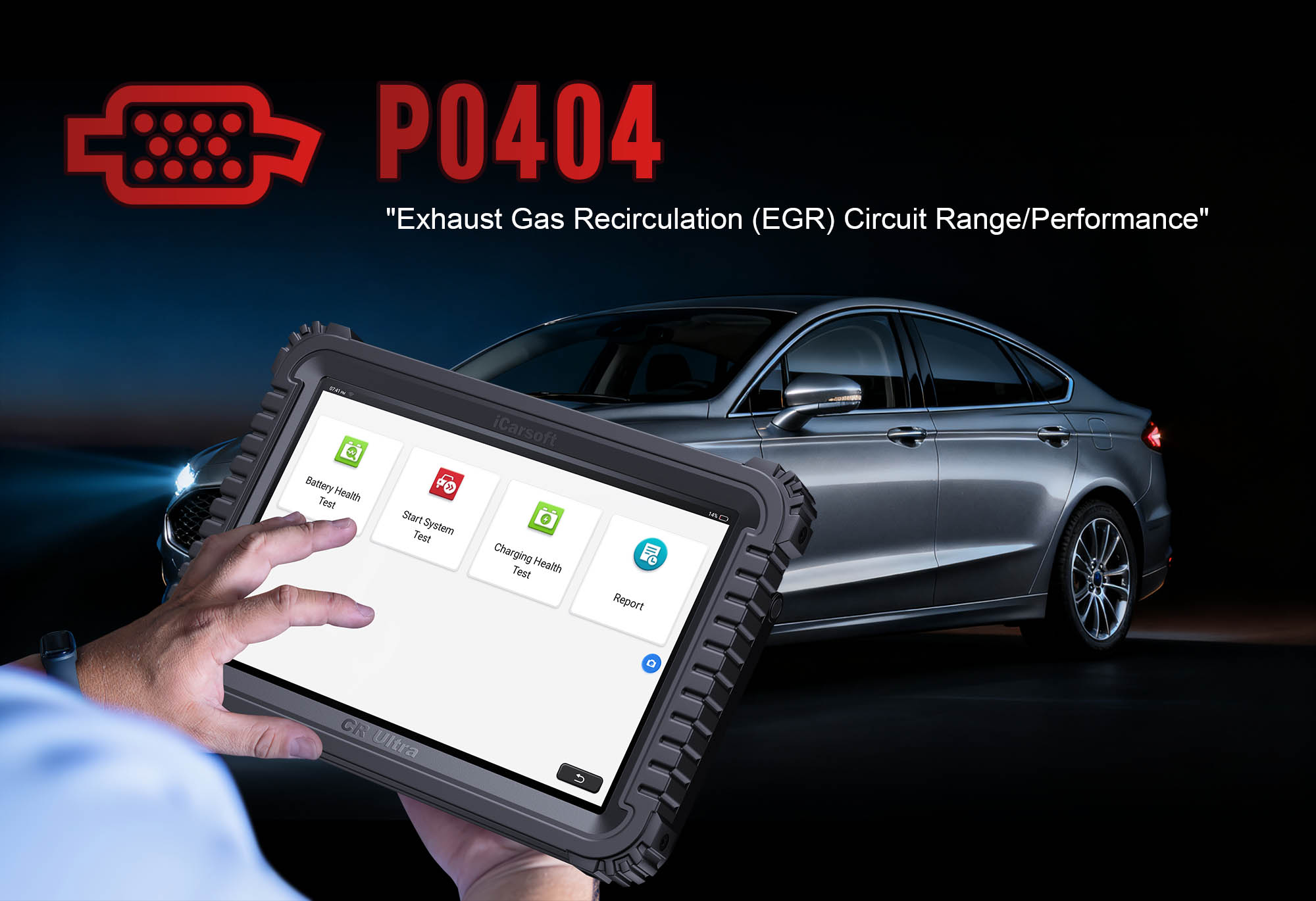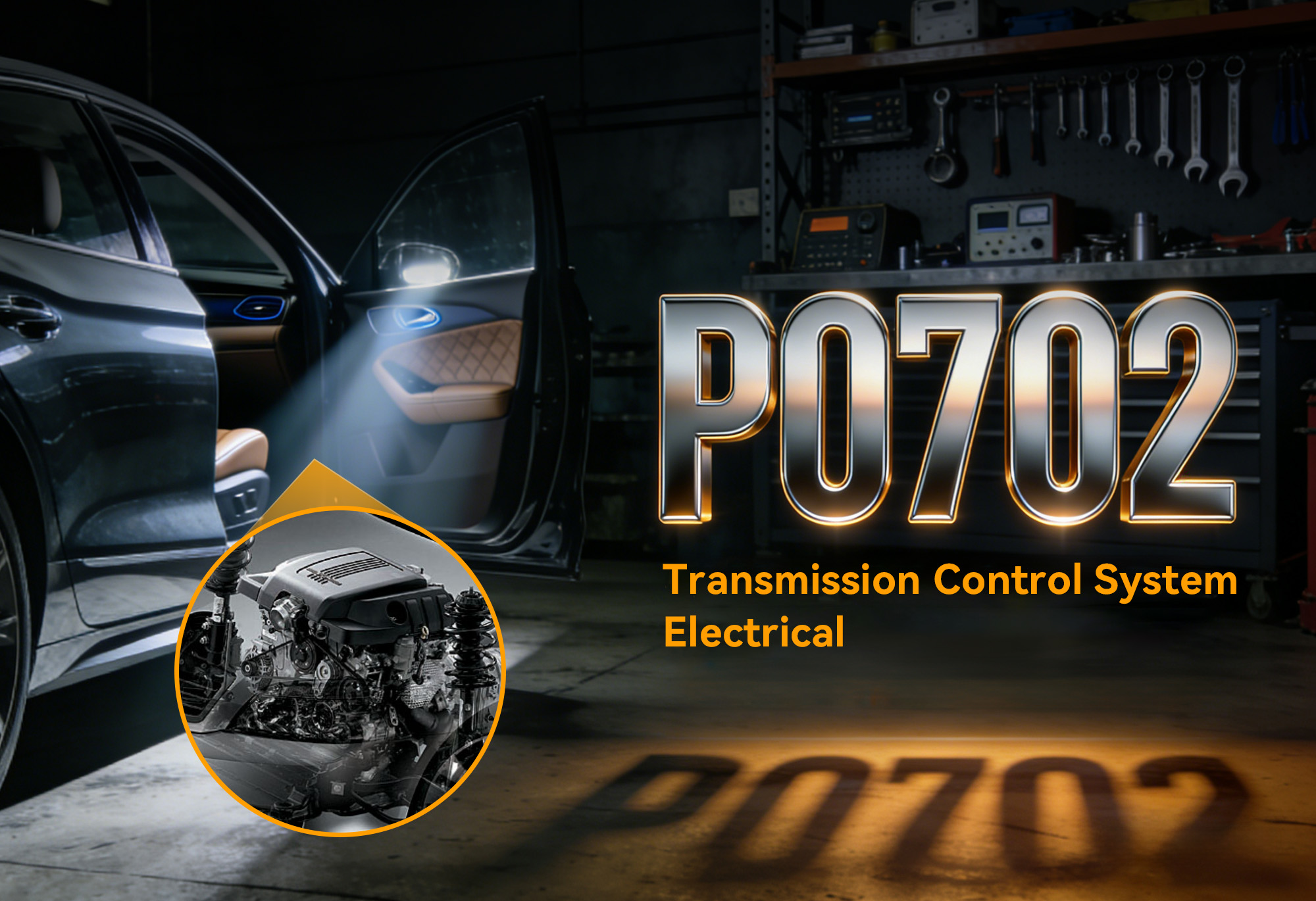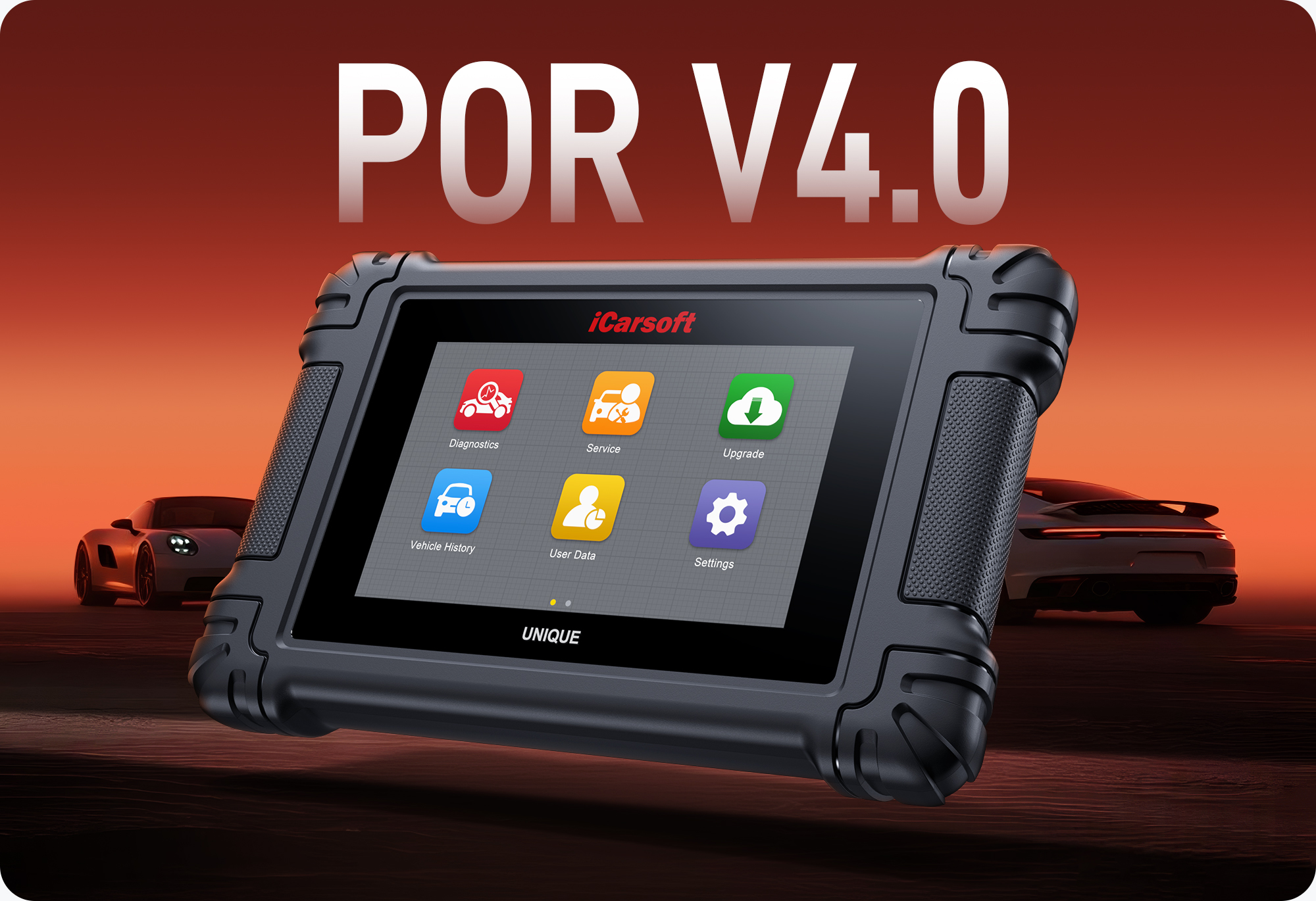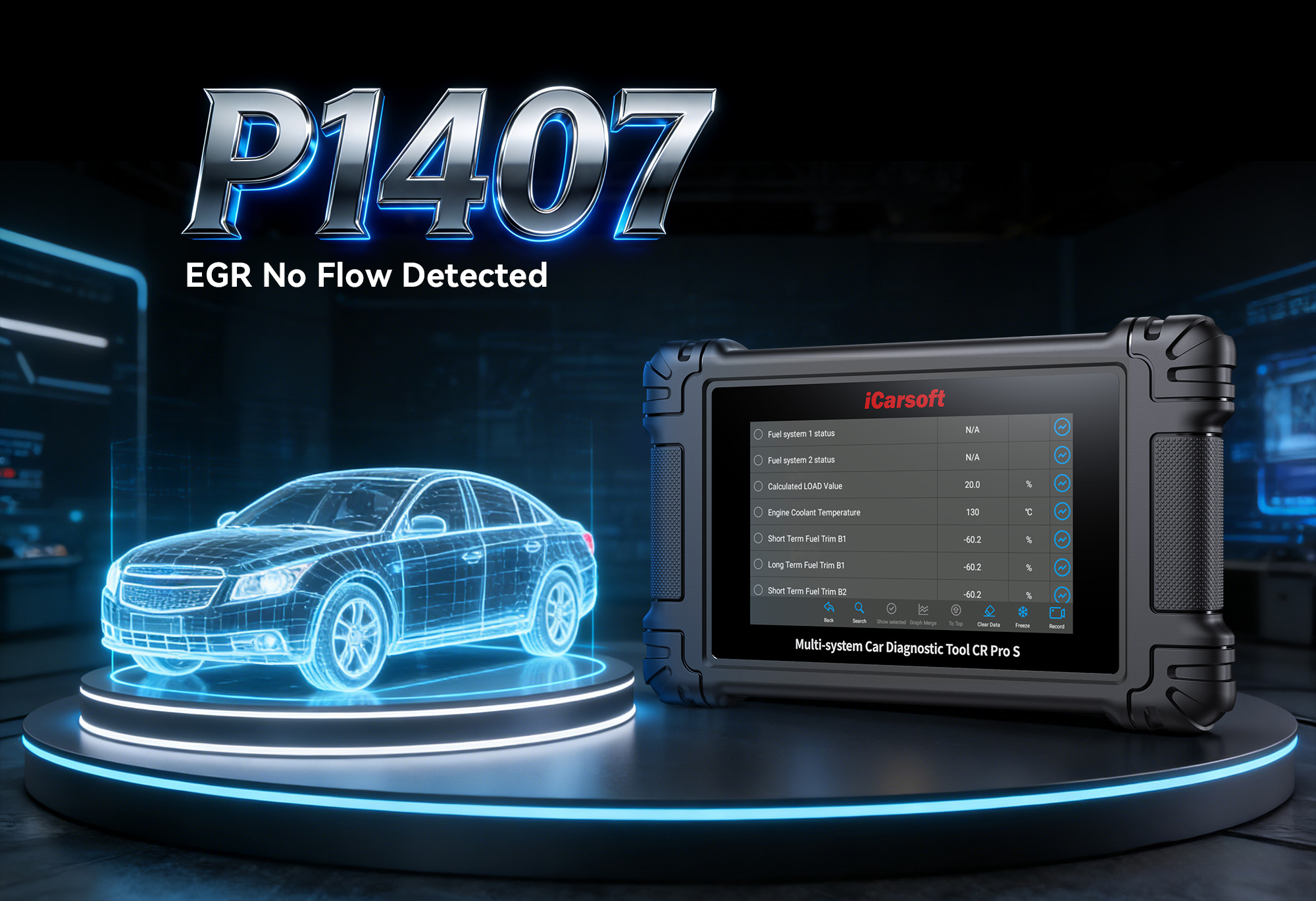P0404 Code: How to Diagnose & Fix EGR Valve Position Performance with iCarsoft CR Ultra
If your check engine light illuminates and you notice reduced fuel efficiency, rough idle, or even hesitation during acceleration—especially at low speeds—a diagnostic scan will likely return P0404. This OBD-II code stands for “Exhaust Gas Recirculation (EGR) Valve Position Performance,” indicating the Engine Control Module (ECM) has detected a mismatch between the commanded EGR valve position and the actual position reported by the valve’s sensor.
The EGR valve is a critical emissions component that recirculates a small amount of exhaust gas back into the intake manifold, lowering combustion temperatures and reducing nitrogen oxide (NOx) emissions. For optimal performance, the ECM precisely controls the valve’s opening (e.g., 10% open at idle, 30% open under light load). P0404 triggers when the valve fails to move to the ECM’s desired position—whether stuck closed, stuck open, or moving erratically. Left unaddressed, this can lead to increased emissions, catalytic converter stress, and even engine overheating.
Basic scanners may only flag “EGR valve fault” but can’t test valve movement or distinguish between mechanical jams and sensor errors. The iCarsoft CR Ultra, with its advanced EGR valve bidirectional control, position signal analysis, and carbon buildup detection, solves this. Let’s explore how to diagnose and resolve P0404 using this professional-grade tool.
Understanding P0404: Causes & Key Symptoms
A malfunctioning EGR valve disrupts emissions control and engine airflow, creating distinct performance issues tied to the valve’s position—these clues help narrow down the root cause.
Key Symptoms of P0404
-
Check Engine Light: Illuminates when the EGR valve’s actual position deviates by ±15% (varies by manufacturer) from the ECM’s commanded position for 3+ drive cycles.
-
Reduced Fuel Efficiency: A stuck-closed EGR valve raises combustion temperatures, forcing the ECM to enrich the fuel mixture—lowering MPG by 8–12%.
-
Rough Idle or Misfires: A stuck-open EGR valve recirculates too much exhaust gas, diluting the air-fuel mixture and causing unstable idle or misfires at low RPM.
-
Hesitation Under Light Load: The engine struggles during slow acceleration (e.g., merging into traffic) as erratic valve movement disrupts airflow.
-
Increased Emissions: Failed emissions tests are common, as NOx levels spike when the EGR valve can’t regulate exhaust recirculation.
-
Engine Knocking (Detonation): A stuck-closed valve leads to higher combustion temps, causing pre-ignition (audible knocking) under load.
Common Causes of P0404
|
Cause
|
Description
|
|
Carbon Buildup in EGR Valve
|
Most frequent cause—soot and carbon from exhaust gas clogs the valve’s pintle or seat, preventing full opening/closing.
|
|
Faulty EGR Motor/Solenoid
|
Electric (motor-driven) or vacuum (solenoid-controlled) components fail, leaving the valve stuck in one position.
|
|
EGR Position Sensor Failure
|
The sensor that reports valve position to the ECM malfunctions, sending incorrect data (even if the valve itself works).
|
|
Wiring/Connector Issues
|
Corroded terminals, frayed wires, or loose plugs disrupt communication between the EGR valve, sensor, and ECM.
|
|
Vacuum Leaks (Vacuum-Operated EGR)
|
Leaks in the vacuum line reduce pressure, preventing the valve from moving to the commanded position.
|
|
ECM Software Glitch
|
Rare—outdated firmware miscalculates the desired EGR position, triggering a false P0404.
|
Why iCarsoft CR Ultra Excels at Diagnosing P0404
The CR Ultra outperforms basic scanners with EGR-specific features that isolate mechanical, electrical, or sensor-related causes of P0404:
Bidirectional EGR Valve Control
Manually commands the valve to open/close to specific positions (10%, 30%, 50%, 100%), verifying if it responds to ECM-like signals.
Position Signal Correlation
Cross-references the ECM’s commanded position with the sensor’s actual position reading—highlights mismatches (e.g., "Commanded: 30%, Actual: 0%").
Carbon Buildup Detection
Measures valve movement resistance during tests; higher-than-normal resistance indicates carbon clogging (avoids unnecessary valve replacement).
3D EGR System Mapping
Displays high-res diagrams of the EGR valve, sensor, vacuum lines, and wiring for 200+ brands (e.g., "VW Golf: EGR = Top of Intake Manifold").
Vacuum Pressure Testing
Measures vacuum levels in lines (for older EGR systems) to identify leaks that prevent proper valve movement.
Sensor Validation Tests
Verifies the EGR position sensor’s accuracy by comparing its readings to the CR Ultra’s direct valve position measurements.
Step-by-Step: Diagnose P0404 with iCarsoft CR Ultra
-
Connect & Confirm the P0404 Code
1. Plug the CR Ultra into your vehicle’s OBD-II port (use included adaptors for older models) and power on the tool.
2. Select your vehicle via Auto VIN Scan (instantly pulls make/model/engine specs) or manual entry.
3. Navigate to Engine > Fault Codes > Read Codes to confirm P0404. Tap Code Details for vehicle-specific insights (e.g., "Ford Focus: EGR Stuck Closed; Check Carbon & Vacuum Leaks").
-
Locate EGR Components with 3D Mapping
1. Go to Component Location > Engine > Emissions System > EGR Valve Assembly.
2. Use the 3D diagram to identify key parts:
- EGR Valve: Typically on intake/exhaust manifold (4-cylinders: front; V6s: rear).
- Position Sensor: Attached to the valve (has a wiring connector).
- Vacuum Lines (If Applicable): Thin hoses to the vacuum pump (older systems).
- Wiring Harness: Path to the ECM (check for heat damage near exhaust).
-
Analyze Live EGR Position Data
1. Start the engine and let it reach operating temperature (10–15 minutes).
2. Navigate to Engine > Live Data > Emissions > EGR System and monitor:
- Commanded Position: ECM’s desired opening (0% at idle, 25% at 2,000 RPM).
- Actual Position: Sensor-reported opening (P0404 = consistent mismatch).
- Valve Current (Electric): Normal = 0.5–1.5A when moving; 0A = no power.
- Vacuum Pressure (Vacuum): Normal = 10–15 inHg when open; low = leak.
-
Test EGR Valve Movement (Bidirectional Control)
1. Ensure the engine is off (or idling per tool instructions). Go to Special Functions > Engine > Emissions Tests > EGR Valve Bidirectional Control.
2. Command the valve to open/close to specific positions and monitor "Actual Position":
- Stuck Closed: Actual position stays 0% when commanded open → carbon buildup/motor failure.
- Stuck Open: Actual position stays 100% when commanded closed → mechanical jam/failed spring.
- Erratic Movement: Jumps (10%→40%→5%) → wiring/sensor issue.
3. Check resistance during tests: Higher-than-spec resistance = carbon clogging.
-
Inspect EGR Valve, Sensor & Circuit
1. EGR Valve Inspection: Remove the valve (use Torque Guide for bolts) and check for carbon buildup (clean with EGR cleaner) or broken pintle/seals (replace if damaged).
2. Position Sensor Test: Disconnect the sensor; use the CR Ultra’s multimeter to measure resistance (normal = 1,000–3,000 ohms per specs). Erratic readings = faulty sensor.
3. Wiring/Connector Check: Inspect for frayed wires; test continuity between valve/sensor and ECM. Clean corroded terminals with contact cleaner.
4. Vacuum Line Test: Connect the CR Ultra to the line; command the valve open—rapid pressure drop = leak (replace line).
-
Rule Out ECM or Software Issues
1. ECM Software Update: Go to System > Update Manager to install firmware updates—fixes false P0404 from miscalculated positions.
2. ECM Command Validation: Run Diagnosis > Engine > ECM/PCM > EGR Command Signal Test—missing/weak signals = ECM fault (consult a mechanic).
-
Repair & Clear P0404
1. Fix the root cause:
- Carbon buildup: Clean the valve with EGR cleaner (follow tool’s Cleaning Guide).
- Faulty valve/sensor: Replace with OEM parts (use Part Lookup for compatibility).
- Wiring/vacuum leaks: Splice wires with heat-shrink connectors; replace leaking lines.
- ECM issues: Update firmware or seek professional repair.
2. Clear the code: Navigate to Engine > Fault Codes > Clear Codes to delete P0404.
-
Validate the Repair
1. Recheck live data: Actual EGR position should match commanded position (±5%) across all RPM/load.
2. Retest bidirectional control: Valve moves smoothly to all positions with normal resistance.
3. Test drive for 30–40 minutes (idle, city, highway)—no rough idle/hesitation = success.
4. Run Emissions Pre-Test to verify NOx levels are within specs.
Preventing P0404 Recurrence
Use the iCarsoft CR Ultra to maintain EGR system health and avoid future P0404 issues:
-
EGR Cleaning Reminders: Set Service Reminder to clean the valve every 30,000–50,000 miles (more often for stop-and-go traffic).
-
Sensor Maintenance: Include the EGR position sensor in quarterly electrical checks—clean connectors and test resistance.
-
Fuel Quality Alerts: Use Fuel Trim Monitoring to detect poor fuel (causes excess carbon)—switch to higher-quality fuel if needed.
-
Monthly Quick Scans: Run Quick Scan to monitor EGR position data—address minor mismatches before P0404 triggers.
Conclusion
P0404’s EGR valve position mismatch disrupts emissions control and engine performance, but the iCarsoft CR Ultra eliminates guesswork with bidirectional testing, carbon detection, and signal analysis. Whether cleaning a clogged valve, replacing a faulty sensor, or fixing vacuum leaks, this tool ensures you resolve the root cause—restoring fuel efficiency, reducing emissions, and protecting critical components like the catalytic converter.
With the CR Ultra, tackling “EGR valve faults” becomes a precise process, keeping your vehicle compliant with emissions standards and running smoothly for miles to come.
FAQs About P0404 Code
Q: Can I drive with P0404?
A: Short trips (e.g., to a repair shop) are safe, but long drives risk increased emissions, reduced MPG, and catalytic converter damage (from unburned fuel). Address P0404 within 1–2 weeks.
Q: How much does it cost to fix P0404?
A: $20–$50 for DIY EGR cleaning; $80–$200 for a new sensor; $150–$400 for an OEM EGR valve. Professional labor adds $100–$200. The CR Ultra ($200–$300) saves money by avoiding misdiagnosis.
Q: Will P0404 clear on its own after cleaning the EGR valve?
A: No—even if the valve works after cleaning, you must manually clear P0404 with a tool like the CR Ultra. The ECM won’t reset the code until the fault is fixed and the code is cleared.
Q: Can a dirty air filter cause P0404?
A: Indirectly— a clogged air filter reduces airflow, leading to richer fuel mixtures and more exhaust soot. This accelerates EGR carbon buildup, which can trigger P0404 over time.





